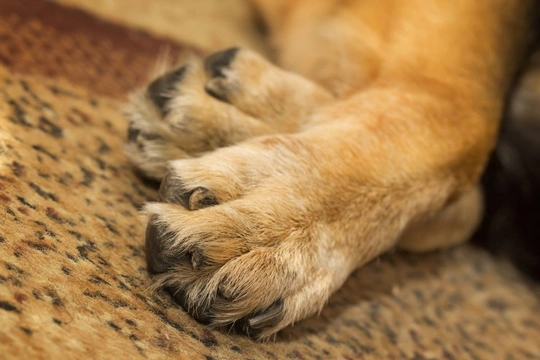
What is Carpal Hyperextension in Dogs?
When a dog walks, they do so on the tip of the tips of their toes which is a lot different to how we walk. However, when things go wrong the way a dog walks can often lead to them developing a condition known as hyperextension which sees a collapse in a dog's normal upright stance and it's a problem that needs veterinary attention as soon as possible.
Carpal Hyperextension Explained
An injury to a dog's carpal joint can result in a breakdown in the ligaments that support it which then sees a dog walking quite abnormally. Dogs are immediately lame when they suffer an injury of this nature, but their condition gets progressively worse as time goes on and in the end it can result in them suffering from painful arthritis in the affected joint.
Any dog can suffer this type of injury although it is more commonly seen in older dogs especially when they reach their golden years. The most likely cause of an injury to a carpal joint is caused when a dog lands badly on their front legs and it usually happens when they jump down or fall from a significant height.
Signs to Watch Out For There May be a Problem
The signs to watch out for that a dog has suffered an injury to their carpal joint could include the following:
- A sudden lameness on their front legs
- Swelling and inflammation around their wrist
- Dogs typically stand in a different way and their gait changes too. They appear to be walking in a strange way which is much flatter"" than usual
How a Vet Diagnoses Carpal Hyperextension
A vet would need to know how long a dog has been walking ""strangely"" and would take into account their age as well as their overall condition before thoroughly examining them. If the injury or condition has just flared up, the carpal joint is typically inflamed and swollen which means it is painful to the touch. Dogs are often quite unstable on their feet and an affected foot would often appear to ""collapse"" under their weight.
In order to get a clear picture of what's going on, a vet would need to carry out what are known as ""stress radiographs"" because normal x-rays may not show the extent of the damage to a dog's carpal joint. Dogs need to be sedated in order for these tests to be carried out safely. A vet would also want to carry out blood work and a urinalysis to get a full picture of a dog's condition before they are sedated and prior to any more indepth test being carried out.
Treatment Options Available
The majority of carpal injuries cannot be just ""managed"" and surgical intervention is the preferred course of treatment. The procedure is quite invasive and involves having metal plates, pins and screws placed in the bone so that a dog can stand normally again. Occasionally, a cast will do the job, but it depends on the severity of the injury and how badly a carpal joint has been damaged. Dogs need to be given pain relief when they undergo this type of procedure and will need to continue to be given the medication even when they are allowed to go home.
The All-important After-care
Dogs typically have to wear a cast or a splint when they have undergone this type of surgery and it's really important that all dressings and bandages be kept as clean and dry as possible until they are removed by the vet. Owners need to check their pet's paws on a daily basis to make sure there is no pain, swelling or discomfort which could indicate an infection may have taken hold. Should a bandage or dressing get dirty or wet, it would need to be changed by a vet before it starts smelling which could provide the perfect environment for bacteria to thrive and which could lead to a very serious infection.
Dogs need to be kept very quiet for the first 6 to 8 weeks after they come home and more X-rays would need to be done after this time to make sure that everything is healing as it should and for the vet to assess when a cast can safely be taken off.
Living and Management
Dogs that have had to undergo surgery to correct a carpal injury might never be able to walk as they used to do and might not have any movement in the carpus at all, but this depends on the type of surgery they received and the extent of the initial damage done to the joint.
Prevention Better Than Cure
Although it would be impossible to prevent this type of injury from happening in the first place, there are things you can do to reduce the risk of your dog suffering this type of injury which includes making sure they don't jump down from any great heights because carpal hyperextension injuries typically happen when they do. If you exercise your dog in the countryside, try to avoid areas where there are lots of rabbit or other holes because putting a leg down one of them may well result in your dog suffering an injury to their carpal joint too.
""



